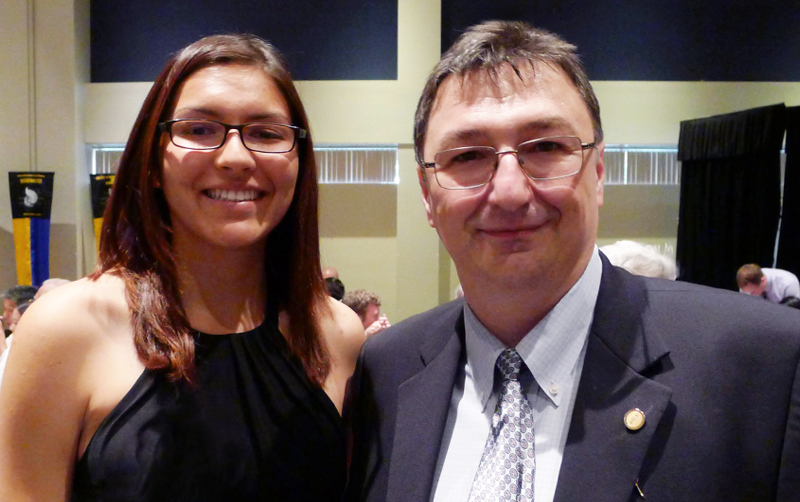
California State University Junior Isabel Serrano and her research mentor, mathematics professor Bogdan Suceavă, may have solved a mathematical mystery.
While many textbooks discuss curvature, few references and no current calculus textbook mention the 14th-century French monk Nicole Oresme, who founded the origins of the idea 300 years before Isaac Newton. Curvature of plane curves, for example, is a concept that is discussed in CSUF's calculus III curriculum.
For their research, Serrano and Suceavă combed through 600-year-old books, among other publications, for answers. They reported their findings in "A Medieval Mystery: Nicole Oresme's Concept of Curvitas," published Oct. 1 in Notices, the peer-reviewed journal of the American Mathematical Society.
Serrano is a double major in mathematics and history. The President's Scholar, a member of Phi Alpha Theta History Honor Society, aspires to earn a doctorate in mathematics. She offers insights about the research in this Q&A:
What is the paper's focus?
Our paper examines the origins of curvature, a math formula used in multivariable calculus. The focus is on Nicole Oresme, a French scholar who lived during the Dark Ages. Impressively, Oresme worked during a time of social and political instability — a period when mathematical language had not been completely developed. These conditions are what make Oresme’s contribution to curvature remarkable. As our paper notes, Oresme’s work has often been disregarded in tracing the history of curvature. So, Dr. Suceavă and I attempt to explain the possible reasons for his finding's absence among these works.
What does it mean to get your work published?
As an undergraduate student, the opportunity to be published is remarkable. I've been able to research under a terrific and incredibly talented faculty mentor, and that experience within itself has been rewarding. To be published in a notable journal is incredible, and it’s a way to step into the math community. This publication is essentially reassuring me that I can help contribute some form of knowledge to mathematics — and I think as a scholar that’s what you strive to do.
How is this experience contributing to your academic success?
The experience was an interesting process as it involved math, linguistics and historical knowledge. It also showed me what I can do if I were to combine my disciplines. In terms of my academic goals, doing research has helped me to be more involved in my college and, overall, has improved my research skills.
What have you enjoyed most about CSUF?
I have thoroughly enjoyed my experience here. The professors have been incredible and have demonstrated that they care for the welfare of their students. Likewise, I’ve found a sense of camaraderie, community and support among students in both the history and math disciplines.
Why study both math and history?
When I tell people I’m a double major, people react with, 'Those disciplines are so different!' But that’s what I like about them. Each discipline teaches me how to think critically in different ways and keeps my work balanced. Working on this paper demonstrated what can be achieved by combining both disciplines. I enjoy math for its puzzle-like problems; I like history because of the stories and the analysis we do to try and explain human motives. I find both disciplines fun as I try and solve their mysteries.
By: Bogdan Suceava, Ph.D.